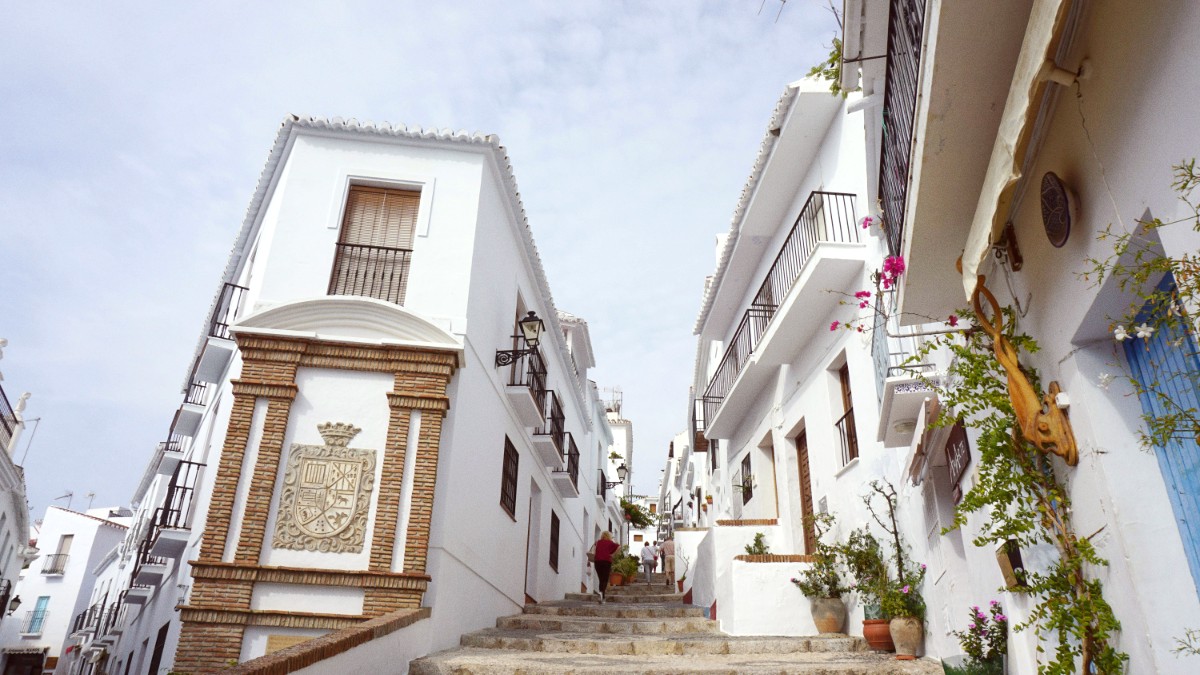
Andalucia, Spain
Andalusian cuisine has roots in Roman and, more importantly, Moorish influences. The Moors introduced new ingredients like rice, citrus fruits, and sugarcane.
Their culinary legacy remains in dishes using almonds, honey, and aromatic spices. Eating is a social event in Spain, with long lunches and late dinners. Tapas culture underscores this communal approach to food.
The bedrock of Andalusian cooking, used in most savory dishes, salads, gazpacho, and stews.
Nerja's coastal location means fresh fish and seafood (sardines, prawns, squid). Cured ham (Jamón Serrano/Ibérico) is a national treasure.
Artichokes, asparagus, broad beans, eggplant are common. Oranges and lemons are abundant, used in cooking and for refreshing juices.
Skewered sardines grilled over an open wood fire on the beach.
A quintessential Nerja beachside experience. Look for it at chiringuitos.
Mixed fried fish (anchovies, squid, prawns) and sizzling prawns in hot olive oil with garlic and chili.
Light, crispy, and fresh. Gambas Pil Pil is aromatic, perfect for dipping with bread.
Cold garlic-almond soup (Ajoblanco), refreshing tomato-based soups (Gazpacho/Salmorejo), and seafood paella.
Ideal for warm days or a communal meal. Seafood paella is widely available along the coast.
Fried dough pastries, served with thick, hot chocolate for dipping. A breakfast or afternoon snack treat.
Fried almonds often served as a complimentary tapa. Anise-flavored biscuits, popular around Christmas.
Nerja features a few upscale restaurants with modern Spanish cuisine, often with sea views. High-quality ingredients are emphasized. Reservations are often advised.
Abundant throughout the town center and beach areas. They offer traditional Andalusian dishes, fresh seafood, and popular international options. Expect a relaxed atmosphere and good value.
Numerous tapas bars provide budget-friendly options. Many offer a free tapa with each drink, allowing economical sampling. Small cafes and bakeries are perfect for breakfast and lunch.
Growing awareness. Look for "vegetariano" or "vegano" on menus. Salads, vegetable paella (verify stock), and Pisto are common options.
Many restaurants can adapt dishes. Apps like HappyCow can guide you.
Awareness of "sin gluten" (gluten-free) is improving. A pre-translated card explaining needs is advisable.
Fresh grilled fish, seafood, and vegetable dishes without sauces are generally safe choices. Large supermarkets stock GF products.
Italian, Indian, Chinese, British, and other cuisines.
Mercado Municipal for fresh produce, meat, fish (not a food hall).
Limited dedicated options. Consider vegetarian/fish dishes, verify ingredients.
Useful for clearly stating dietary restrictions.
Dine at a traditional Chiringuito on Burriana Beach with freshly grilled seafood (Espetos) cooked over an open fire.
A quintessential Nerja experience.
Check local calendars for food-related events, often around harvest times or during local fiestas.
Opportunities to taste regional specialties and experience local traditions.
Tipping is customary but not obligatory in Spain. For good service, a small tip (5-10%) is appreciated, especially in restaurants.
In many bars, a free tapa comes with each drink. You do not always choose the tapa, but sometimes you have a few options.
Dining in Spain proceeds at a relaxed pace. Waiters do not rush you, and lingering at the table after a meal is common.
Most establishments accept credit/debit cards, but cash is always useful for smaller purchases or local markets.
Many tourist-oriented restaurants offer picture menus or menus in multiple languages. These simplify ordering.
If unsure, point to a dish that looks good.
If you have specific dietary concerns or questions about ingredients, ask the staff. They are generally helpful, especially in tourist areas.
Be clear and concise with your questions.
A classic Spanish breakfast: toasted bread with fresh grated tomato, olive oil, and sometimes garlic. Simple and delicious.
The region produces excellent goat cheese. Try it as a tapa or in salads. Often served with a touch of olive oil.
A local molasses-like syrup, often drizzled over fried eggplant (berenjenas con miel) or used in desserts. A unique regional flavor.
Spaniards eat later than in many other countries.